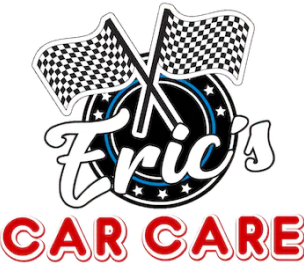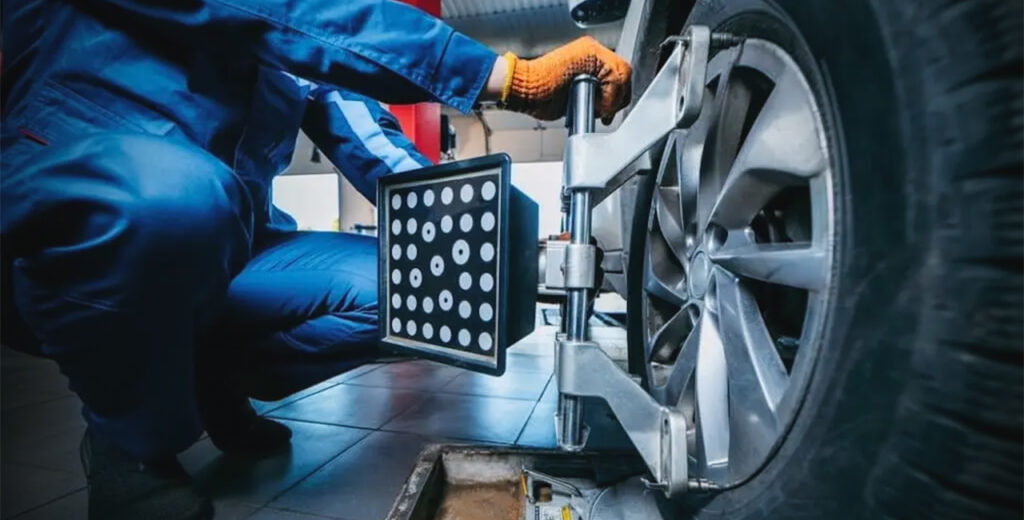Have you noticed your car pulling to one side or uneven wear on your tyres? These are common signs that you might need a wheel alignment. But what is wheel alignment, and why does it matter?
Wheel alignment refers to adjusting the angles of your car’s wheels so they meet the manufacturer’s specifications. Proper alignment ensures that your tires are perpendicular to the road and parallel to each other. This adjustment impacts your vehicle’s handling, fuel efficiency, and tyre lifespan. For professional assistance, consider wheel alignment services at auto repair shops in houston, tx to keep your car in top shape.
Understanding the Basics of Wheel Alignment
Wheel alignment involves several key adjustments:
1. Camber
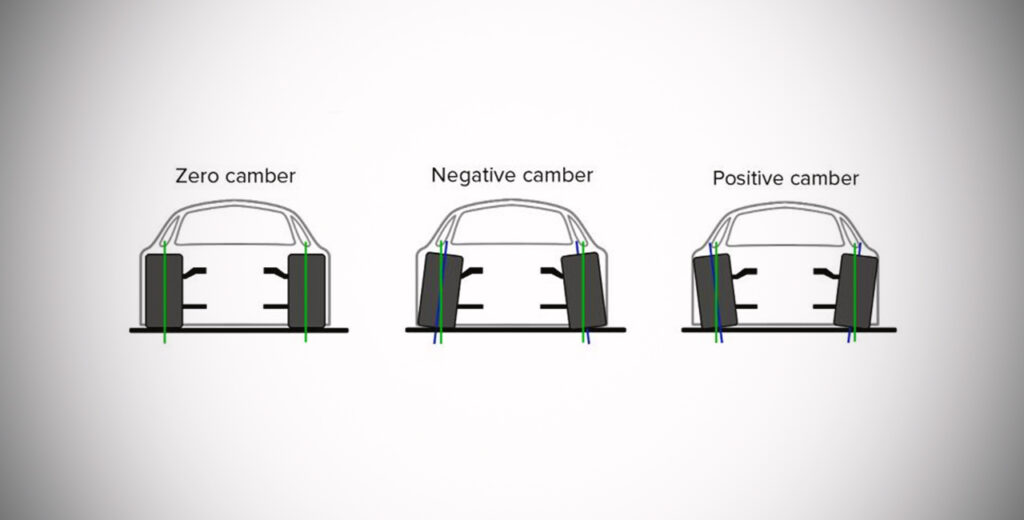
This is the angle of the wheels when viewed from the front of the vehicle. If the top of the wheel leans inward or outward, it’s known as cambered wheels, which can cause uneven tyre wear. Negative camber (inward tilt) can improve cornering but may lead to rapid tyre wear if excessive. Positive camber (outward tilt) is often used in off-road vehicles for stability.
2. Toe
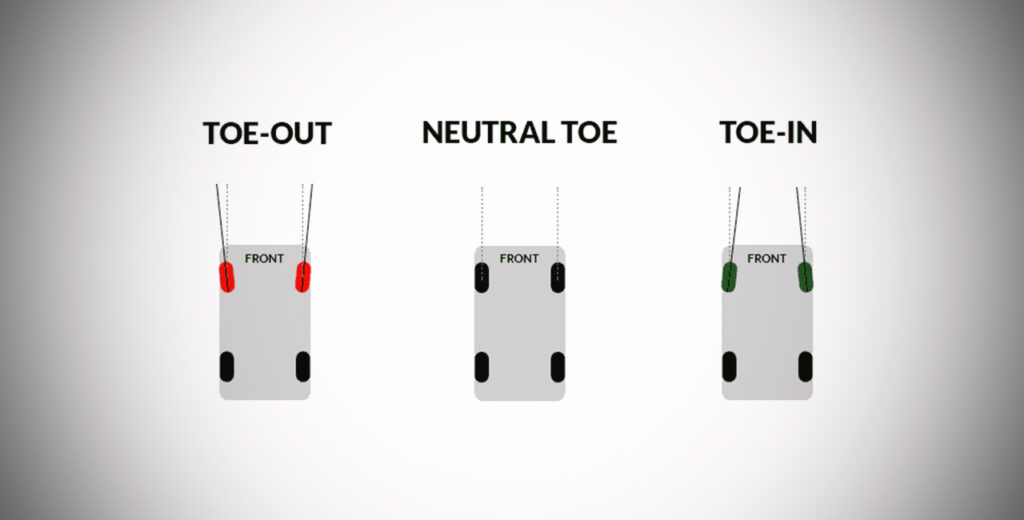
This refers to the direction the tyres point in relation to each other. “Toe-in” means the tires point inward, while “toe-out” means they point outward. Both can lead to poor handling and uneven tyre wear if misaligned. Proper toe alignment ensures smooth driving and prevents drag.
3. Caster
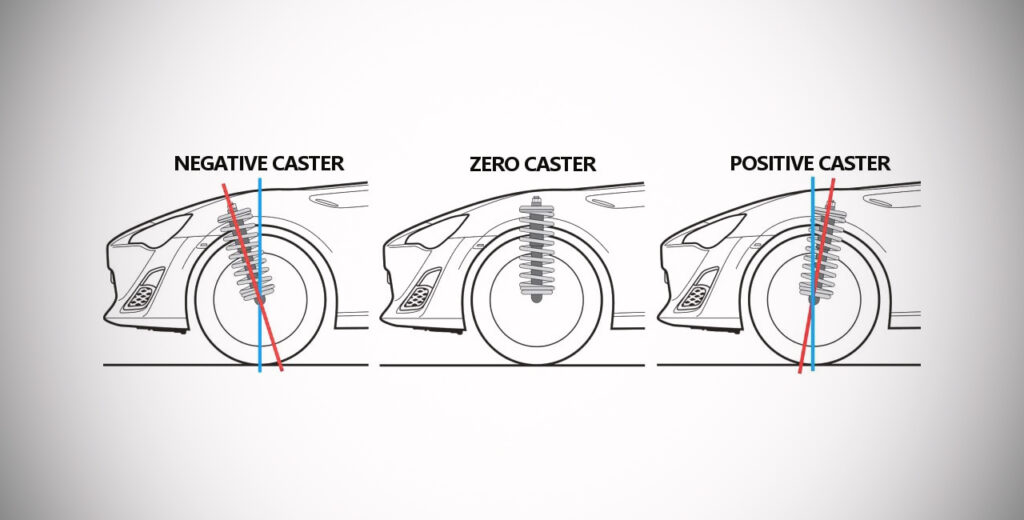
This is the angle of the steering axis when viewed from the side of the vehicle. A positive caster angle improves stability and steering control at higher speeds, while a negative caster angle can make steering feel lighter but less stable.
Types of Wheel Alignment
There are three main types of wheel alignment:
Front-End Alignment
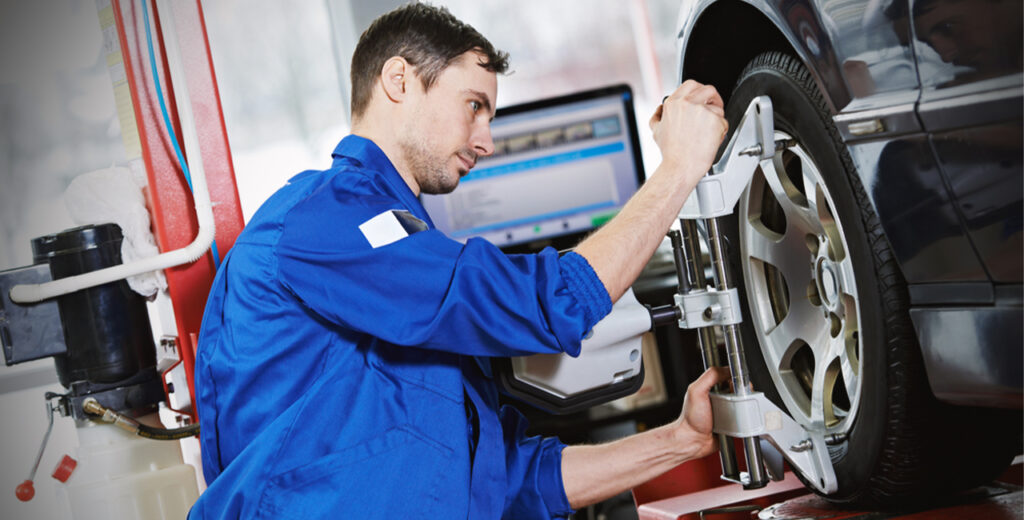
Front-end alignment focuses solely on the front wheels, ensuring they are set to the proper angles for steering and stability. This type of alignment is typically performed on older vehicles with solid rear axles. It corrects issues like uneven tire wear and pulling to one side, improving overall handling.
Thrust Alignment
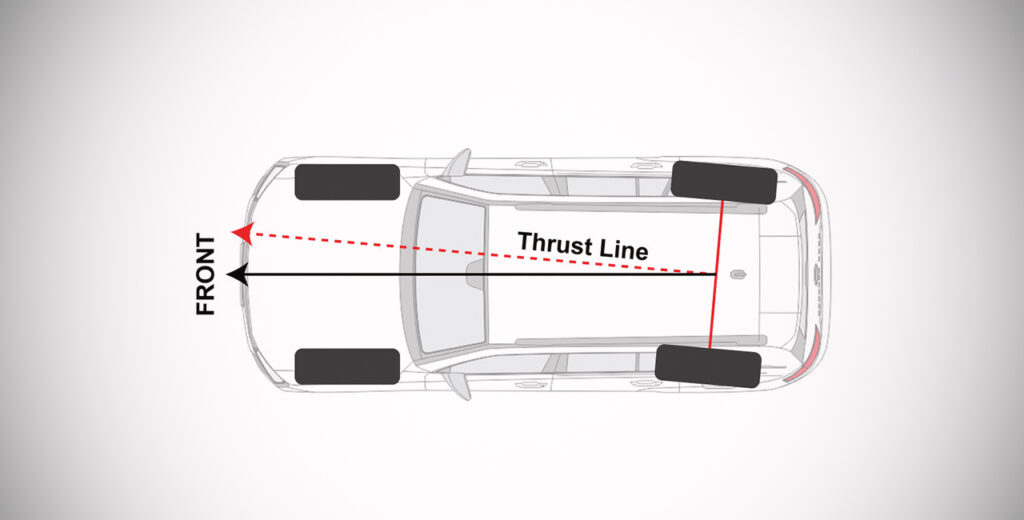
Thrust alignment aligns the rear axle with the front wheels, ensuring all four wheels are parallel and pointing in the same direction. This method is common for vehicles with non-adjustable rear suspensions. It helps prevent uneven tire wear, improves straight-line tracking, and ensures the vehicle moves smoothly without veering.
Four-Wheel Alignment
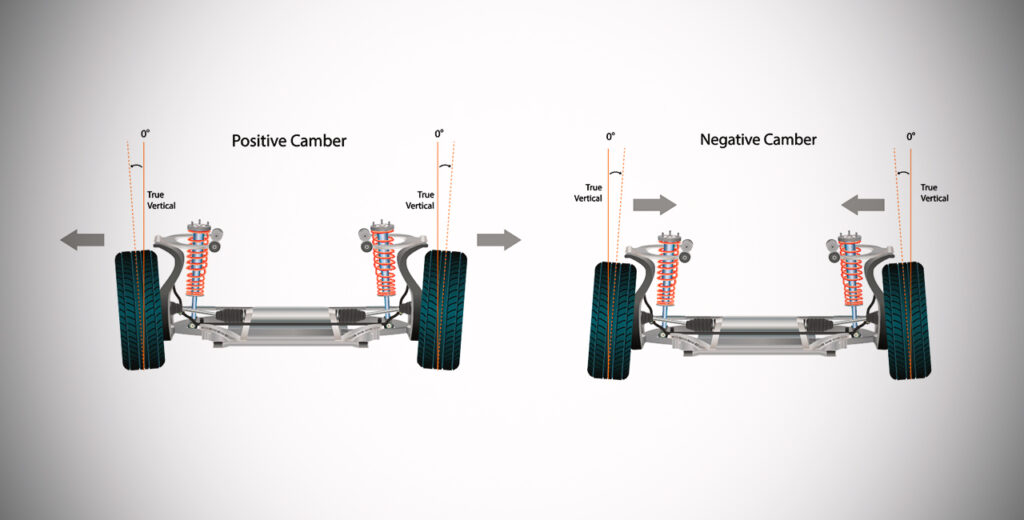
A four-wheel alignment adjusts all four wheels, ensuring proper angles for vehicles with independent rear suspensions. It corrects the camber, caster, and toe angles on both axles, optimizing handling, reducing tire wear, and ensuring stability. This type of alignment is crucial for modern vehicles to maintain peak performance and safety.
Why Is Wheel Alignment Important?
Proper alignment of your vehicle offers numerous benefits:
- Improved Fuel Efficiency: Misaligned wheels can create resistance, forcing your engine to work harder and consume more fuel. Correct alignment reduces rolling resistance, leading to better mileage.
- Enhanced Tyre Lifespan: Tyres wear evenly when alignment is correct, saving you money on replacements. Uneven wear patterns, such as feathering or cupping, are common signs of misalignment that can shorten tyre life.
- Better Handling and Safety: Proper alignment improves steering wheel alignment, making your vehicle easier to control and safer to drive. Misalignment can make your car pull to one side, increasing the risk of accidents.
- Reduced Wear on Suspension Components: Misaligned wheels put unnecessary stress on suspension parts like shock absorbers, struts, and control arms, leading to premature wear and costly repairs.
Common Signs Your Vehicle Needs Alignment
Knowing when your vehicle needs a wheel alignment can save you from bigger problems. Watch out for these signs:
- The car pulls to one side while driving.
- Uneven or rapid tyre wear.
- Vibrations in the steering wheel, especially at high speeds.
- The steering wheel is off-center when driving straight.
- Noisy steering or a squealing sound from the tyres.
Ignoring these signs can lead to further damage and higher repair costs.
Tools and Techniques Used in Wheel Alignment
Professional mechanics use advanced wheel alignment tools like:
- Alignment Machines: These state-of-the-art devices measure and adjust camber, toe, and caster angles with precision. They use sensors and cameras to provide real-time feedback.
- Laser Alignment Tools: These tools ensure highly accurate measurements and adjustments, especially for modern vehicles with intricate suspension systems.
- Turn Plates: Used to measure steering angles and ensure accurate adjustments.
DIY enthusiasts can purchase basic tools for alignment, but professional equipment is recommended for precision and safety. Suspension alignment and tyres alignment tools available for home use are often limited in accuracy compared to those in professional workshops.
The Role of Suspension Alignment
The suspension system plays a critical role in maintaining proper wheel alignment. Components like control arms, ball joints, and shock absorbers ensure that the wheels remain aligned during driving. If these components are worn or damaged, alignment adjustments will not hold, and misalignment issues will persist.
Suspension alignment also involves ensuring that the vehicle’s weight is evenly distributed across all four tyres. Uneven weight distribution can lead to issues like cambered wheels or uneven tyre wear, affecting the vehicle’s handling and stability.
Visualizing Correct vs. Incorrect Wheel Alignment
To better understand the importance of vehicle alignment, consider a comparison:
- Correct Alignment: Tyres are parallel to each other and perpendicular to the road, ensuring even wear and optimal performance. This alignment improves fuel efficiency, handling, and safety.
- Incorrect Alignment: Tyres are angled improperly, causing drag, uneven wear, and reduced handling. Misaligned wheels can make your car feel unstable and unsafe.
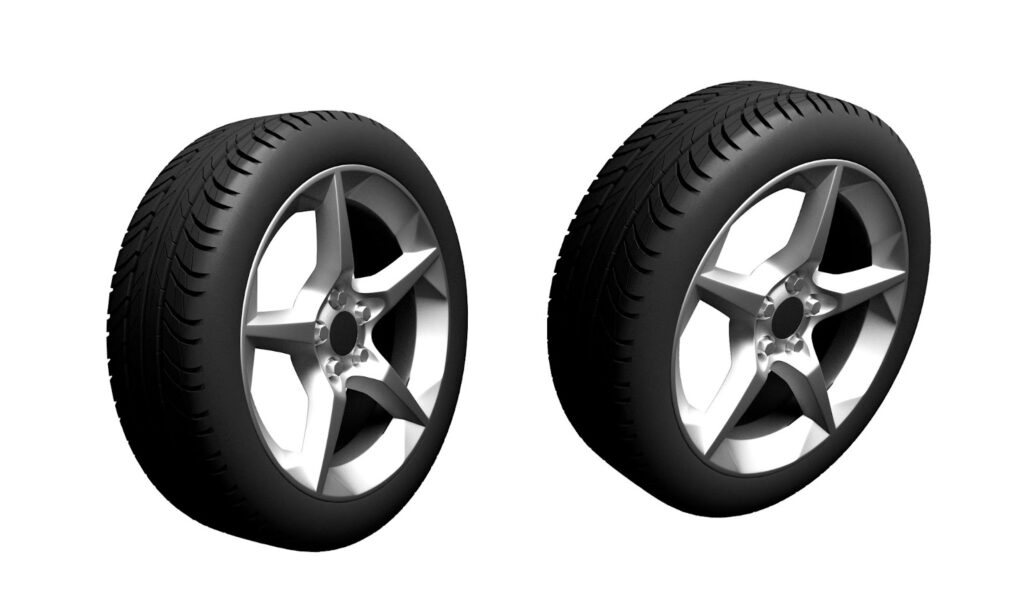
How to Prevent Misalignment
Preventing misalignment involves regular maintenance and cautious driving habits. Here are some tips:
- Avoid Potholes and Curbs: Hitting potholes or curbs can knock your wheels out of alignment.
- Check Tyre Pressure: Maintain the correct tyre pressure as recommended by the vehicle manufacturer.
- Schedule Regular Alignment Checks: Include alignment checks during routine vehicle servicing, especially after driving on rough roads.
- Inspect Suspension Components: Regularly check for worn or damaged suspension parts and replace them as needed.
When to Seek Professional Wheel Alignment Services
For significant misalignment or complex issues, professional services are essential. At Eric’s Car Care, our certified technicians use advanced tools to ensure precise alignment, enhancing safety and performance. We also inspect for underlying issues like worn suspension components. Trust Eric’s Car Care for reliable alignment services. Schedule today!
Benefits of Professional Services
- Precision and Accuracy: Advanced equipment ensures precise adjustments.
- Time-Saving: Professionals can complete the alignment process quickly and efficiently.
- Comprehensive Inspection: Mechanics can identify other potential issues, such as suspension wear or tyre damage.
How Often Should You Align Your Wheels?
Experts recommend checking your vehicle’s alignment every 6,000 to 10,000 miles or at least once a year. However, if you frequently drive on rough terrain or notice signs of misalignment, schedule an alignment check sooner.
The Cost of Wheel Alignment
The cost of wheel alignment varies depending on your vehicle and location. On average:
- Two-Wheel Alignment: $50 to $100.
- Four-Wheel Alignment: $100 to $150.
Some workshops offer alignment packages that include tyre rotation and balancing, which can be a cost-effective option.
Conclusion
Understanding what wheel alignment is and its importance can save you from costly repairs and improve your driving experience. Regular vehicle alignment checks, along with professional wheel alignment services, ensure your tyres last longer and your car handles better. Don’t ignore the signs of misalignment, schedule a check today and drive with confidence!
Get Expert Wheel Alignment at Eric’s Car Care Today!
Eric’s Car Care ensures your vehicle stays in top condition with professional wheel alignment, maintenance, and repair services. Our expert team is dedicated to improving your car’s performance, safety, and tyre lifespan. Don’t wait for issues to arise, visit us today or call us at 713-667-9293 to schedule your service for a smoother, safer ride!
